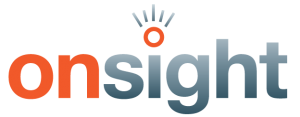by OnSight | Jan 2014 | Social Media, Strategy, Trends, Web Communications
Things are constantly changing on the social media landscape. If you made it a priority to track of Facebook’s latest algorithm change and the latest social media buzzword you wouldn’t even have time to get your work done. Luckily for you, that’s our job.
On that note, we thought we would update you on a couple of recent changes that could have a significant effect on our outreach efforts. There’s tons more happening, of course (are you following us on Twitter and Facebook for regular updates?), but these are two pretty big ones that we want to make sure you know about:
1. Facebook pages
Facebook is changing the way it shows page posts in people’s feeds — basically they are downgrading the value of all page posts, so while it will still help to have the sort of good content that generates real engagement, it is even then going to be harder and harder to even show up in people’s feeds without paying for ads.
Some time around the beginning of December, Facebook changed its algorithm in such a way that every user’s news feed was tweaked slightly – more relevant, newsy-type stories and shared articles by friends would be seen, but at the expense of posts by pages. Many businesses, including small-to-medium-sized businesses that can’t really afford huge marketing budgets, saw the potential of social media marketing some years back and have built up healthy followings and a good number of likes on their Facebook pages. However, this recent move by Facebook is an attempt to get companies to pay to reach these audiences.
“We expect organic distribution of an individual page’s posts to gradually decline over time as we continually work to make sure people have a meaningful experience on the site. We’re getting to a place where because more people are sharing more things, the best way to get your stuff seen if you’re a business is to pay for it,” says a document produced by Facebook.
Read more here.
2. Gmail Servers
Gmail is changing the way it hosts images, which — without going into the technical nitty-gritty — means we are going to have a harder time tracking when people actually open/read emails. This means open rates are going to go down across the board, and will not be reflective of actual open rates. The open-rate metric has always been a proxy, but this information can amount of any drop we see.
Google has just announced a move that will shut most of these tactics down: it will cache all images for Gmail users. Embedded images will now be saved by Google, and the e-mail content will be modified to display those images from Google’s cache, instead of from a third-party server. E-mail marketers will no longer be able to get any information from images—they will see a single request from Google, which will then be used to send the image out to all Gmail users. Unless you click on a link, marketers will have no idea the e-mail has been seen.
More details on this change available here.
We’re not sure yet how these changes will be affecting our clients and services, but we are hard at work here figuring out how to make your online outreach efforts work for you, and we have ideas cooking on both fronts to make sure we’re changing tactics to account for these changes.

by OnSight | Jun 2013 | Connect for Health Colorado, Press and Media, Print Communications, Trends

Connect for Health Colorado is preparing to open for business in October of 2013.
OnSight’s work with Connect for Health Colorado continues as the insurance marketplace prepares to open in October of this year. Last week Colorado’s Department of Insurance announced that eleven insurance carriers will participate in the state health marketplace. More health care options for Coloradans is a great thing, and we’re excited to to help Connect for Health as they get ready to launch.
Through Connect for Health Colorado, consumers will be able to choose from many health insurance carriers at competitive rates. Prices may be even lower for many Coloradans because of new financial assistance available only through Connect for Health Colorado.
Participating carriers include All Savers Insurance Company (part of United HealthCare), Anthem, Cigna, Colorado Choice, Colorado HealthOP, Denver Health, Humana, Kaiser Permanente, New Health Ventures and Rocky Mountain Health Plans. The health care plans are all designed to be sold only on the exchange, and include doctor visits, hospitalizations, maternity care, emergency room care, and prescriptions.
Connect for Health Colorado kicked off its public outreach campaign with TV and print ads. Groups may request a speaker from the organization to learn more about the health care marketplace, and representatives from Connect for Health Colorado will begin visiting communities around the state this summer.
Individuals and small businesses in Colorado will be able to start shopping for health care this October, and coverage will begin January 2014. Click here to learn more about Connect for Health Colorado.
![We [Heart] Infographics](https://onsightpublicaffairs.com/admin/wp-content/uploads/2013/01/Screen-Shot-2013-01-25-at-10.36.20-AM.png)
by OnSight | Jan 2013 | Branding, Graphics, Print Communications, Trends

So much data! Such a beautiful map!
Infographics are no fad: the ability to pack a lot of useful data in a small amount of space, and make it fun to learn something or visualize complicated concepts in a fresh way is eternally useful.
Here’s a roundup of some great infographics we’ve encountered recently:
Warby Parker’s fun, informal, and informative annual report is an innovative approach to the often stuffy formality, and also provides information you never thought you cared about in a dynamic web interface.
Cute and fun: Drake Martinet’s marriage proposal.
Sometimes infographics are less design challenges than data ones. Here’s an example of a ton of data integrated into a map, making a tool that is useful and visually impressive at both the macro- and micro-level.
Infographics can pack tons of personality and information into what might otherwise be unremarkable promotional pieces.
And if you’re a Pinterest user, there’s a never-ending waterful of amazing infographics to peruse and get inspiration from. Here’s a good place to start.
Let us know if you’ve got a challenge that creative visualization might be able to tackle.

by OnSight | Apr 2012 | Social Media, Trends
Twitter blew up Monday with news of Facebook’s acquisition of photo filtering and sharing mobile app Instagram. Part of the buzz was grumbling from Instagram fans, worried that Facebook would disassemble a beloved app and use its parts for scrap; another was bemusement at the price tag on the deal – a cool billion dollars (which works out to about 76 million per employee); the third – and to our minds the most interesting – topic of discussion centered around speculation as to what, exactly, Facebook does plan to do with Instagram, and how the industry leader in social will again evolve…and take the rest of us along with them.
 Facebook’s biggest medium is photos – over 200 million are uploaded to Facebook every day. The biggest bonus Facebook gets for its billion is providing a value added service to its users to share more individual photos, increasing the appeal of Facebook timeline and make it easier for people to share photos. Bottom line: sharing cool stuff we’ve seen or created is ideally what it’s all about.
Facebook’s biggest medium is photos – over 200 million are uploaded to Facebook every day. The biggest bonus Facebook gets for its billion is providing a value added service to its users to share more individual photos, increasing the appeal of Facebook timeline and make it easier for people to share photos. Bottom line: sharing cool stuff we’ve seen or created is ideally what it’s all about.
Even if a few of Instragram’s 30 million users do unsubscribe in a hasty huff, the acquisition is still a pretty significant bump for Facebook, which is clocking in at 800 million subscribers, but facing diminishing returns, having fairly well saturated the US social media market.
For all the buzz, it’s interesting to note that email, not social media, is sill the number one most-used tool for sharing content. More content is still shared via email than by any social media platform, Facebook included. (Exception: high schoolers, for whom Facebook just edges out email as the sharing tool of choice). An email is still tops in terms of timeliness, as well – 91% of people check at least once a day, which is more than any social media application sees.

by OnSight | Feb 2012 | politics, Trends, Web Communications

Getting different constituent databases to talk to each other is harder than tracking down the mythical unicorn of the sea.
There’s some pretty interesting and innovative stuff helping marketers and media managers get messages to the right audiences.
First, a story on the Obama re-election team’s Project Narwhal. As anyone who has worked at a non-profit or corporation that maintains databases (e.g., every organization and non-profit, everywhere) knows, getting all your customer or constituent information all in one place is a difficult and evasive task. Different systems track payments, donations, volunteer actions, inquiries, help requests, and demographic data. Getting all that information in single, consolidated, user-friendly system is neigh impossible – different individuals – even different departments – have ownership of that data, and they’re not always willing (or even able) to share.
From the article:
Even as the outside world marveled at their technical prowess, Obama campaign staffers were exasperated at what seemed like a basic system failure: They had records on 170 million potential voters, 13 million online supporters, 3 million campaign donors and at least as many volunteers—but no way of knowing who among them were the same people.
But Project Narwhal attempts to tackle this disconnect and create the mythical sea unicorn of voter databases:
Narwhal would bring new efficiency across the campaign’s operations. No longer will canvassers be dispatched to knock on the doors of people who have already volunteered to support Obama. And if a donor has given the maximum $2,500 in permitted contributions, emails will stop hitting him up for money and start asking him to volunteer instead. Those familiar with Narwhal’s development say the completion of such a technical infrastructure would also be a gift to future Democratic candidates who have struggled to organize political data that has been often arbitrarily siloed depending on which software vendor had primacy at a given moment.
Good news for all our friends holding office and running campaigns, for certain, not to mention a great way for voters themselves to be kept up to speed on specifically the issues they care most about.
In related news, a new billboard in the UK is using facial recognition technology to determine your gender, and then changes the content of the ad itself depending on who it thinks you are:
Women who walk up to the billboard, which is located at a London bus stop and will be viewable for two weeks, are greeted with a 40-second film explaining the plight of women and girls in poor countries around the world, who often are denied eduction and opportunities that are afforded to men.
Men, however, get a cut-down version of the content. They can’t see the film, but they do get to see shocking statistics about the situation, like the fact that 75 million girls are denied education.”
Actually a pretty clever application, given that the intent of the ad is to highlight different in the way men and women are treated in a circumstance much more serious and life-changing than a bus stop billboard.

by OnSight | Oct 2011 | Mark Udall, OnSight News, politics, Project New West, Strategy, Trends

Project New West Summit in Las Vegas
The Intermountain West was critical to the Democrats in 2008, but will it be even more important in 2012?
You can bet on it.
That’s why Project New West convened the top political strategists from around the country to discuss how we frame Western issues on the eve of the 2012 presidential race. The Western Summit featured speakers like Tom Brokaw, Ted Turner, Senator Harry Reid, and our own Senator Mark Udall, Senator Michael Bennett and, Governor John Hickenlooper.
We also released new polling data from Western states that will provide many with critical insight into the electorate and help them effectively message both traditional and emerging demographic groups.
Lot’s of good ideas and insights came out of the panels and presentations at the Summit. Let’s all hope that, at least this time, what happens in Vegas doesn’t stay in Vegas.
News clippings from the summit:
Denver Post:
The West is an increasingly important political battleground, and Democrats hope to show they are better suited to appeal to their base as well as the ever-important independent-minded voter, said Jill Hanauer, president of the Colorado-based Project New West
“Folks do things differently out here,” she said. “Voters here vote for the person, not the party, and the policy, not the ideology. You don’t get elected by just folks from your own party, you need independents and others from the other party.”
Project New West’s 2011 summit is pulling in the region’s top business leaders, politicians and academics for three days of panels focusing on emerging issues in the New American West.
Read more: Powerful Western Democrats meeting in Vegas
AP:
LAS VEGAS—Western states are becoming more urban and diverse, with an influx of Hispanic, Asian and young voters who tend to vote against Republican candidates, according to political strategists who spoke Monday at a Democratic conference.
“The trend is worrisome if you are a Republican,” Robert Lang, a sociology professor at the University of Nevada, Las Vegas, said during the event.
The battle to win the West is being planned in Las Vegas this week, with Republican and Democratic political consultants holding dueling strategy meetings.
Read more: Strategists: West becoming more urban, diverse
The Nation:
As the 2012 elections approach, both parties are furiously jockeying for position. If the Democrats can turn out their votes in sufficient numbers, Western strategists believe, the party could regain many of the House seats it lost in last year’s GOP landslide, while holding the Senate and retaining the White House. If the Democrats fail to do so, the GOP could enjoy an electoral sweep.
The stakes could hardly be higher: For many residents in the region, the battle for 2012 is about basic economic survival. Yet the contours of what the Western fight will look like are still being drawn.
“Now more than ever,” averred Project New West president Jill Hanauer, “the nation should look west for new ideas. We vote for the person, not the party; the policy position and leadership, not the ideology.” For generations, she continued, people in the West have cherished both their communities and their independence, creating a politics suspicious of centralized government but determined to innovate at a local level.
Read more: The Democratic Plan to Recapture the West
National Journal:
Yet during a public panel that I moderated here sponsored by Project New West, a Democratic research organization, leading party strategists expressed unruffled, almost blithe, optimism about Obama’s ability to hold the three Mountain states he carried in 2008. Partly that was because they expect more young people and minorities to vote in 2012 than did in 2010. But it was primarily because they think Obama will benefit from the contrast with the eventual Republican nominee. The Democratic hope is that those twin dynamics will allow Obama to reassemble the coalition of minorities and suburban whites that reelected Democratic Sen. Michael Bennet last year in Colorado.
As Tuesday’s raucous GOP debate underscored, the Republican nominee will provide Obama plenty of clear contrasts. All of the contenders are betting they can sell a larger retrenchment of government than any GOP nominee has proposed since Reagan (if not Barry Goldwater); they are doubling down on pledges to dismantle environmental regulation and unshackle domestic energy production. The stakes on that wager won’t be greater anywhere than in the increasingly pivotal Mountain West, where acute anxiety about jobs jostles against enduring affection for the land.
Read more: Rocky Territory



![We [Heart] Infographics](https://onsightpublicaffairs.com/admin/wp-content/uploads/2013/01/Screen-Shot-2013-01-25-at-10.36.20-AM.png)






